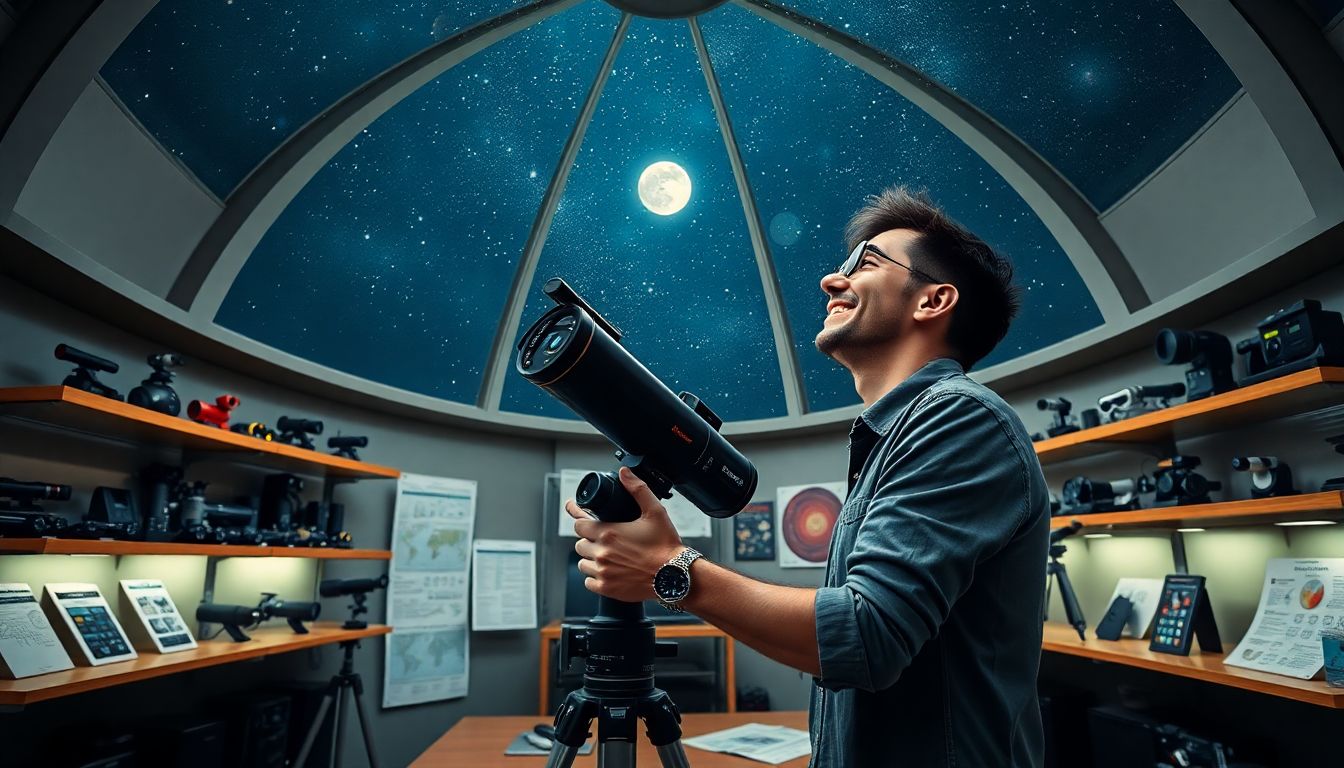
How to Choose the Right Planet Finder for Beginners
Introduction
Stargazing is growing in popularity. Many beginners are drawn to exploring the night sky. But selecting the right planet finder can make all the difference. It helps you see planets clearly and boosts your confidence as a new astronomer. In this article, you’ll learn what to look for, the best types for starters, and tips to pick the perfect device.
Understanding the Basics of Planet Finders
What is a Planet Finder?
A planet finder is a device that helps locate planets in the sky. It’s designed for easy use so beginners can spot planets and other celestial objects. Many confuse planet finders with basic binoculars or regular telescopes. While binoculars work well for some, dedicated planet finders give clearer views of planets like Mars or Jupiter.
How Planet Finders Work
Planet finders use special lenses and mirrors to magnify objects in space. They offer different levels of zoom and field of view. More magnification means images appear bigger, but it can reduce brightness. It’s important to balance magnification with clarity to see planets well.
Benefits of Using a Planet Finder for Beginners
A good planet finder makes viewing easy and more enjoyable. It’s convenient to carry around and set up. Plus, it can help you learn constellations, star patterns, and planetary positions faster. Using the right device encourages continued interest and skill development.
Types of Planet Finders Suitable for Beginners
Refractor Telescopes
Refractors are simple telescopes with glass lenses. They are compact, easy to handle, and often come fully assembled. For beginners, they’re a good choice because they are straightforward to use and require little maintenance. However, they can be pricier for larger apertures.
Reflector Telescopes
Reflectors use mirrors instead of lenses. They tend to be more affordable at larger sizes and provide good views. These telescopes are ideal for beginners wanting to see planets in detail without spending too much. Just remember, they may require more setup and alignment.
Dobsonian and Other Mount Types
Dobsonian mounts are popular among beginners for their simple design. They sit on stable bases that are easy to move, making targeting planets simpler. Other mount types, like alt-azimuth, are also beginner-friendly because they are lightweight and intuitive to operate.
Binoculars as an Alternative
Sometimes, a good pair of binoculars can be enough to find planets. Their portability and wide field of view make them great for quick stargazing. Look for models with at least 7×50 or 10×50 magnification for clear views of planets.
Key Features to Consider When Choosing a Planet Finder
Aperture Size
Aperture is how much light the device captures. Larger apertures show brighter, more detailed images. For beginners, an aperture of 70-80mm for telescopes or 50mm binoculars is ideal. It balances cost and performance.
Magnification Power
Magnification shows how big objects appear. Too much magnification can cause images to blur. For planets, 100x to 150x is enough for good detail. Make sure the device can handle these levels without sacrificing image quality.
Ease of Use and Portability
Look for lightweight, compact options that are easy to carry. Quick setup features save time and frustration. Features like smooth focusing and simple controls are great for beginners.
Mount Type and Stability
A steady mount is crucial. A shaky mount ruins views and causes frustration. Stable mounts like alt-azimuth are perfect for beginners. Avoid mounts that require complex adjustments until you’re more experienced.
Additional Features and Accessories
Extras such as included eyepieces, finderscopes, or apps enhance your experience. Star charts or astronomy software can help you learn the night sky. These tools make it easier to locate planets quickly.
Budget Considerations and Recommended Starter Options
Setting a Budget
Prices vary widely. Basic beginner models can cost from $50 to $200. More advanced devices cost $300 or more. Remember, investing in quality gear pays off in better views and durability.
Best Affordable Options for Beginners
Look for well-reviewed models from trusted brands like Celestron or Orion. For example, the Celestron Inspire 80AZ refractor or Orion StarBlast 4.5 Astro reflects are great choices. Buy from reputable stores or online shops with good return policies to avoid scams.
High-Quality Mid-Range Choices
If your budget allows, consider models like the Sky-Watcher EvoStar or slightly larger Dobsonian telescopes. They offer better optics, stability, and upgrade potential for growing your skills.
Tips for Beginners to Maximize Their Planet Finder Experience
Learn the Basics of Night Sky Navigation
Use star maps or apps like Stellarium or SkyView. Practice identifying constellations and planets. Knowing the sky helps you find objects faster.
Proper Setup and Calibration
Align your finderscope or telescope early in the night. Make sure everything is stable and secured. A well-calibrated device means less wasting time searching.
Maintenance and Care
Keep lenses clean with soft brushes or optical wipes. Store your equipment in a dry, dust-free place. Proper care extends your device’s life and keeps views sharp.
Conclusion
Choosing the right planet finder depends on your needs, budget, and how easy it is to use. Refractors and binoculars are excellent starting points because of their simplicity. Focus on aperture size, stability, and portability to get the best experience. Remember, practice makes perfect. Keep viewing, maintain your equipment, and you’ll see more of our amazing universe.
Key Takeaways
- Your choice depends on your goals, budget, and beginner needs.
- Refractor telescopes and binoculars are popular for starting out.
- Prioritize aperture, ease of handling, and mount stability.
- Practice often and care for your gear to enjoy many nights of discovery.

